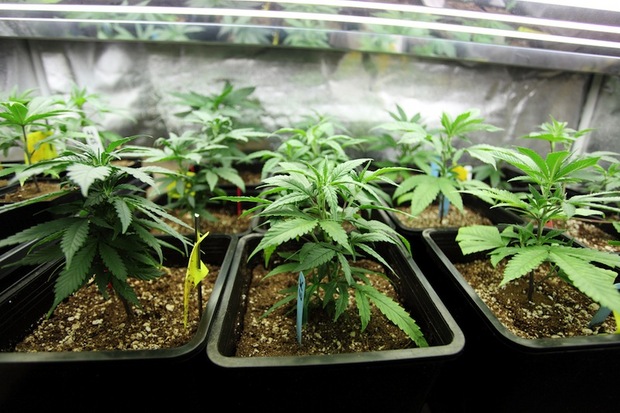Marijuana's Risky Reputation Is Wafting Away

The percentage of people in the United States who see regular marijuana use as harmful has fallen since the beginning of the 21st century, a new study finds. That could translate into more pot users in the future, experts say.
In 2002, about half of Americans (51 percent) thought there was a great risk associated with smoking pot once or twice a week. By 2012, that figure had dropped significantly, to 40 percent, according to data from the National Survey on Drug Use and Health.
Despite the big shift in public opinion, rates of cannabis use did not change that dramatically over the same 10-year period. [Where Americans Smoke and Grow Marijuana (Maps)]
The percentage of people who used marijuana at least once in the previous year only increased from 11.0 percent in 2002 to 12.3 percent in 2012. The percentage of Americans who admitted to using pot on a daily basis remained small; however, it did rise by a statistically significant amount: 1.3 percent in 2002 versus 2.1 percent in 2012.
Dr. Silvia Martins, an associate professor of epidemiology at Columbia University and senior author of the study, wasn't all that surprised by the gap between public views on marijuana and actual marijuana use.
"These social changes take time to reflect in the prevalence of use," Martins told Live Science. "If we revisit the data five years from now, we might see something different going on."
Martins has reason to believe that change will eventually occur; she said past studies of substance abuse have shown that the less risky a person thinks a drug is, the more willing he or she is to use that drug.
Sign up for the Live Science daily newsletter now
Get the world’s most fascinating discoveries delivered straight to your inbox.
Data from the survey showed that young adults (those 18 to 25), people with more education (at least a high school diploma) and people with higher incomes ($75,000 or higher) were among the least likely to perceive risk in regular marijuana use, according to the study. Martins said this is consistent with polls that have shown that these segments of the population are generally more in favor of legalizing marijuana and more likely to seek information about drug use.
Women were nearly twice as likely to perceive risk in regular cannabis use compared with men. (Still, the share of women who saw this risk dropped from 59 percent in 2002 to 47 percent in 2012.) In general, women are more likely than men to view drugs and other substances as risky, Martins said, although men and women now have similar rates of rates of risk perception regarding alcohol. This could be the result of a generational shift, Martins said, as it's become more socially acceptable for women to use alcohol and get drunk in public.
Among doctors and researchers, there's still no widespread consensus about the risks of marijuana, Martins said. That's largely because researchers have been limited in their ability to study the effects of an illegal drug in clinical trials.
"Some people will use that as an argument in favor of legalization, and then other people will use exactly the same argument against legalization," Martins said.
But more research opportunities are opening up as states approve marijuana use. A number of states have legalized medical marijuana, while Colorado, Washington, Alaska, Oregon and the District of Columbia have all approved the recreational use of marijuana and are at various stages of implementing those new laws.
The annual National Survey on Drug Use and Health involves hundreds of thousands of respondents from across the country. As part of this survey, participants were asked about their own cannabis use. They were also asked, "How much do people risk harming themselves physically and in other ways when they smoke [cannabis] once or twice a week?" Their response options included "no risk" "slight risk," "moderate risk" and "great risk."
The findings were published online Feb. 17 in the journal Drug and Alcohol Dependence.
Follow Megan Gannon on Twitter. Follow us @livescience, Facebook& Google+. Original article on Live Science.











